The Enigmatic Sphinx of Giza Unravelling the Mysteries of an Ancient Wonder
Table of Contents: Sphinx of Giza
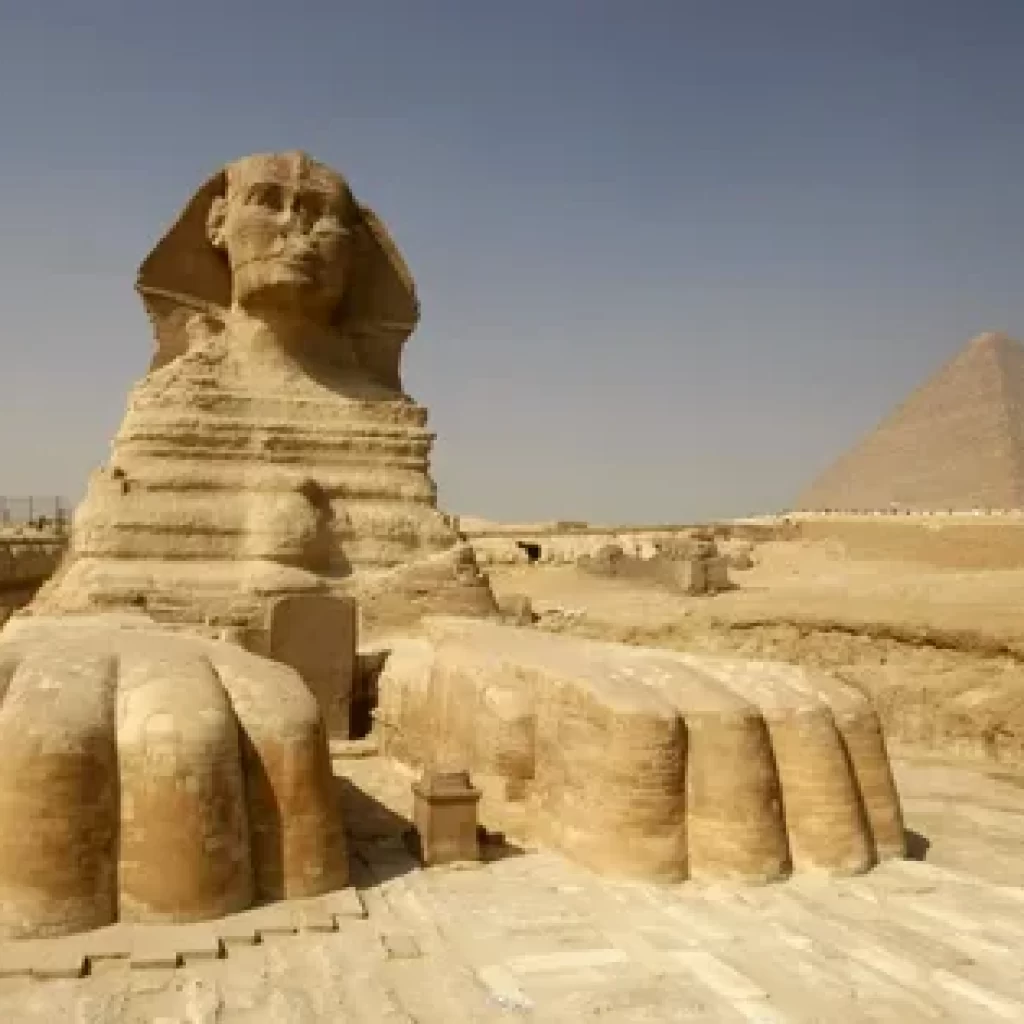
- Introduction
- Origins and Theories
- Architectural Marvels The Sphinx’s
- Weathering the Elements
- Enigmatic Inscriptions
- Mythological Significance
- Excavation and Preservation
- Laser Scanning and Modern Techniques
- Controversies and Debates
- The Sphinx’s Future
Introduction: Sphinx of Giza
Across the silvery Nile from Cairo, on the Giza Plateau, in the shadow of the pyramids, is one of the true wonders of the world. For nearly 5,000 years, its existence has been shrouded in mystery, controversy, and uncertainty. How long has it been there? Who built it, and when? Why was it built? Whose face is on it? Are there secret chambers underneath? These questions have confounded kings, explorers, and experts for centuries.

1. Origins and Theories: Exploring the Sphinx’s Creation
Perhaps, the Sphinx was a temple, and the altar had been used for burnt offerings, purposefully and in constant danger of being crushed by shifting sand. Caviglia kept digging. – Caviglia came, and he had a theory in his mind. In the theory, he thought there was a passage, a tunnel, from the paw of the Sphinx to the Great Pyramid.
2. Architectural Marvels: The Sphinx’s Impressive Dimensions
In modern-day Egypt, the Sphinx plays a significant role. I don’t fully understand it, but it’s a very important role. – One of the world’s marvels, to everyone, and it’s the pride of the Egyptians. – For us, it represents the glory of Egyptian civilization, the things that the Egyptians were capable of.
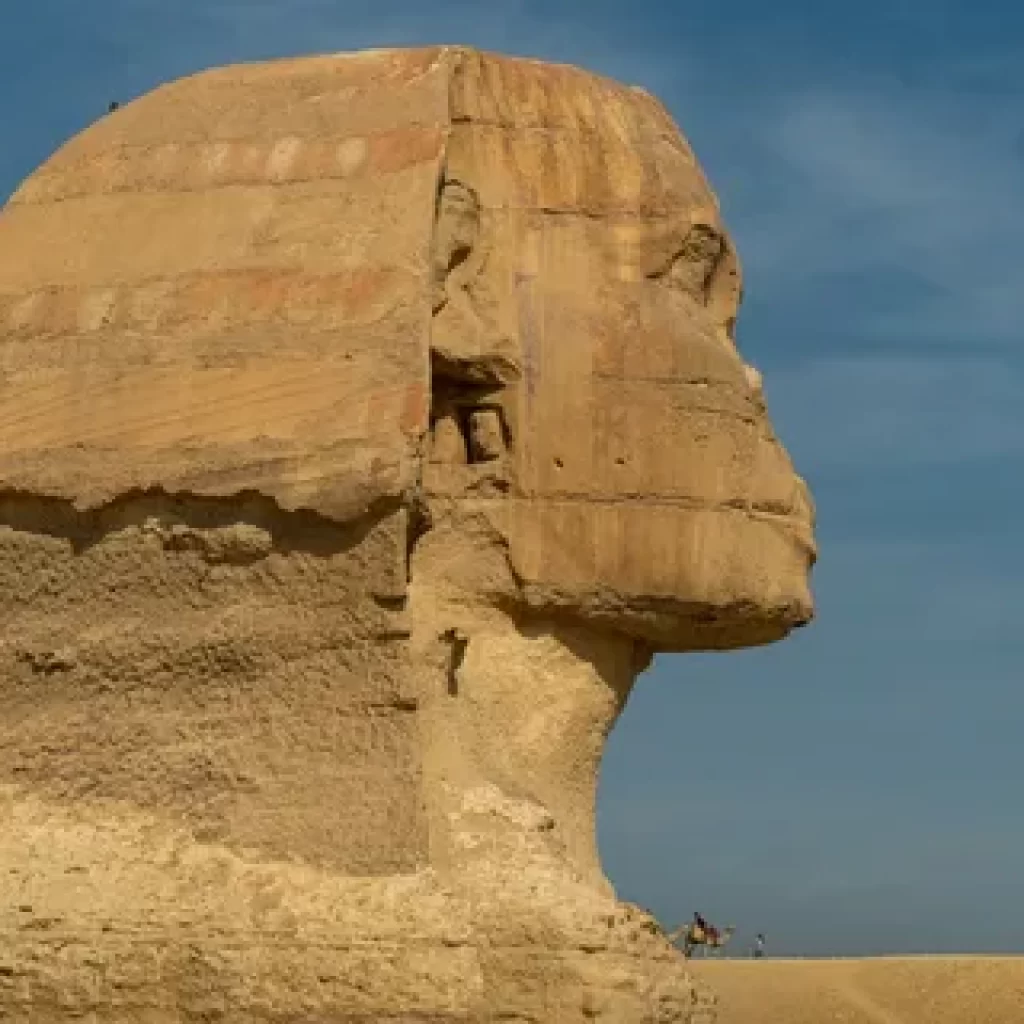
3. Weathering the Elements: The Sphinx’s Enduring Resilience
I like to say that the Sphinx that is a monument with a very long and colourful history, most of which we don’t know. – I could say to people that the stone can talk to me. He’s a stone, but he’s not a stone. He’s a stone in the eyes of everyone, but I feel that inside the Sphinx, he’s looking at us, keeping the secrets of our past.He’s telling us that we should learn from these secrets to understand our future.
4. Enigmatic Inscriptions: Deciphering the Sphinx’s Secrets
But after all the theories, excavations, and disputes, are we finally able to solve the mysteries of the Sphinx? In July 1798, Napoleon invaded Egypt. In a dust storm, with temperatures around 115 degrees, the Battle of Pyramids raged for two hours. Shortly after achieving one of his greatest victories, Napoleon came across something unexpected, a bizarre object few Europeans had ever seen.

5. Mythological Significance: The Sphinx in Ancient Egyptian Beliefs
Many of the tombs and monuments examined by Napoleon’s experts, were inscribed with what may be the oldest form of writing, hieroglyphics. After the fall of Ancient Egyptian civilization in 30 B.C., the meaning of hieroglyphics remained a complete mystery for the next 1,800 years.
6. Excavation and Preservation: Safeguarding the Sphinx’s Legacy
Over the centuries, the Sphinx has been the subject of numerous excavation and preservation efforts, as scholars and conservationists have sought to uncover its secrets and protect it for future generations. From early 19th-century discoveries to modern-day restoration projects, the Sphinx has been the focus of intense study and preservation work. These efforts have not only helped to reveal new insights about the monument but also ensured its continued survival, safeguarding the Sphinx’s legacy as a priceless ancient wonder.
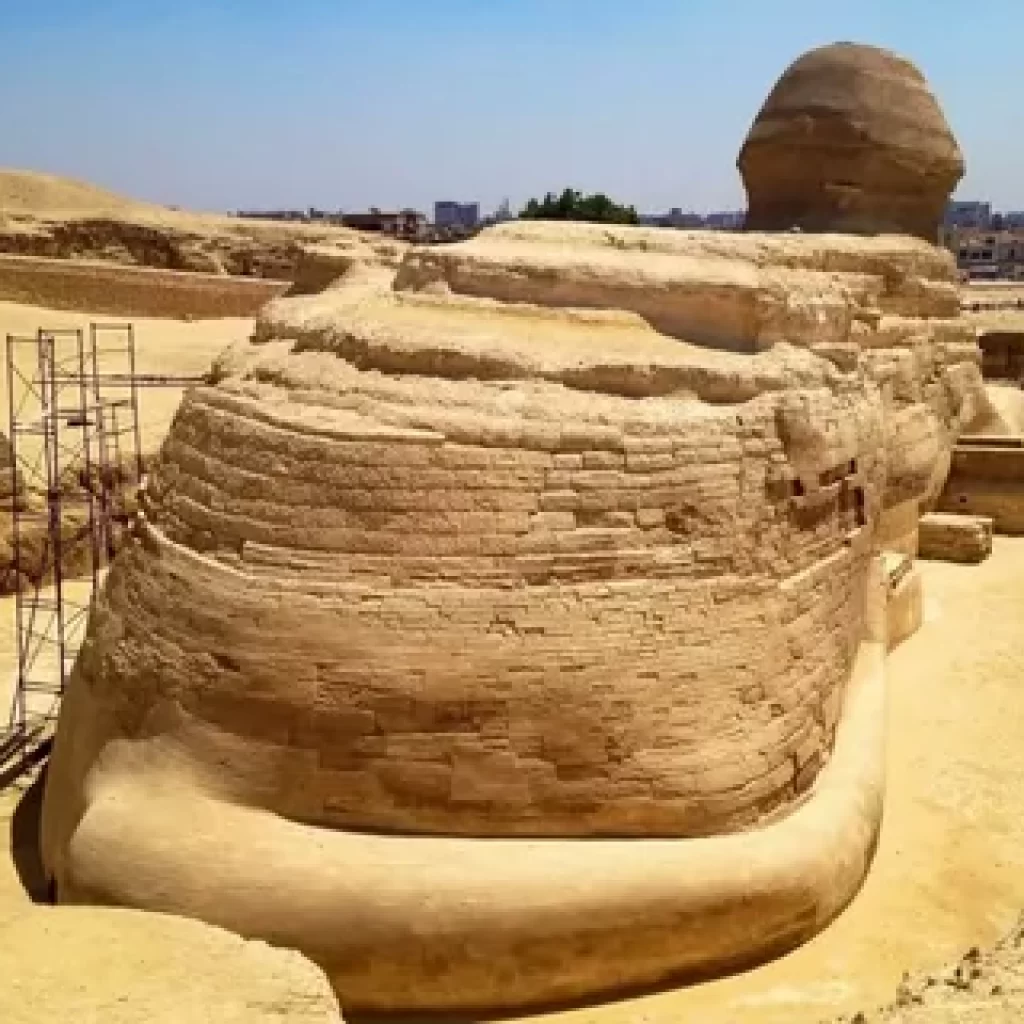
7. Laser Scanning and Modern Techniques: Unlocking New Insights
In recent decades, the application of advanced technologies, such as laser scanning and digital imaging, has revolutionized the study and understanding of the Sphinx. These cutting-edge techniques have allowed researchers to create highly detailed 3D models of the monument, enabling them to analyse its features, identify patterns, and uncover new insights that were previously inaccessible. The use of these modern tools has opened up new avenues of exploration, further expanding our knowledge of the Sphinx and its place in the ancient Egyptian world.
8. Controversies and Debates: Ongoing Discussions about the Sphinx
Having heard local rumours and legends of secret chambers and hidden treasures, Caviglia searched for a way inside the Sphinx. He cleared sand from the neck, and was astonished to discover that the head was attached to the enormous body of a lion 240 feet long and 66 feet high. Between the paws, he found the remains of a small chapel, an altar that showed traces of fire.
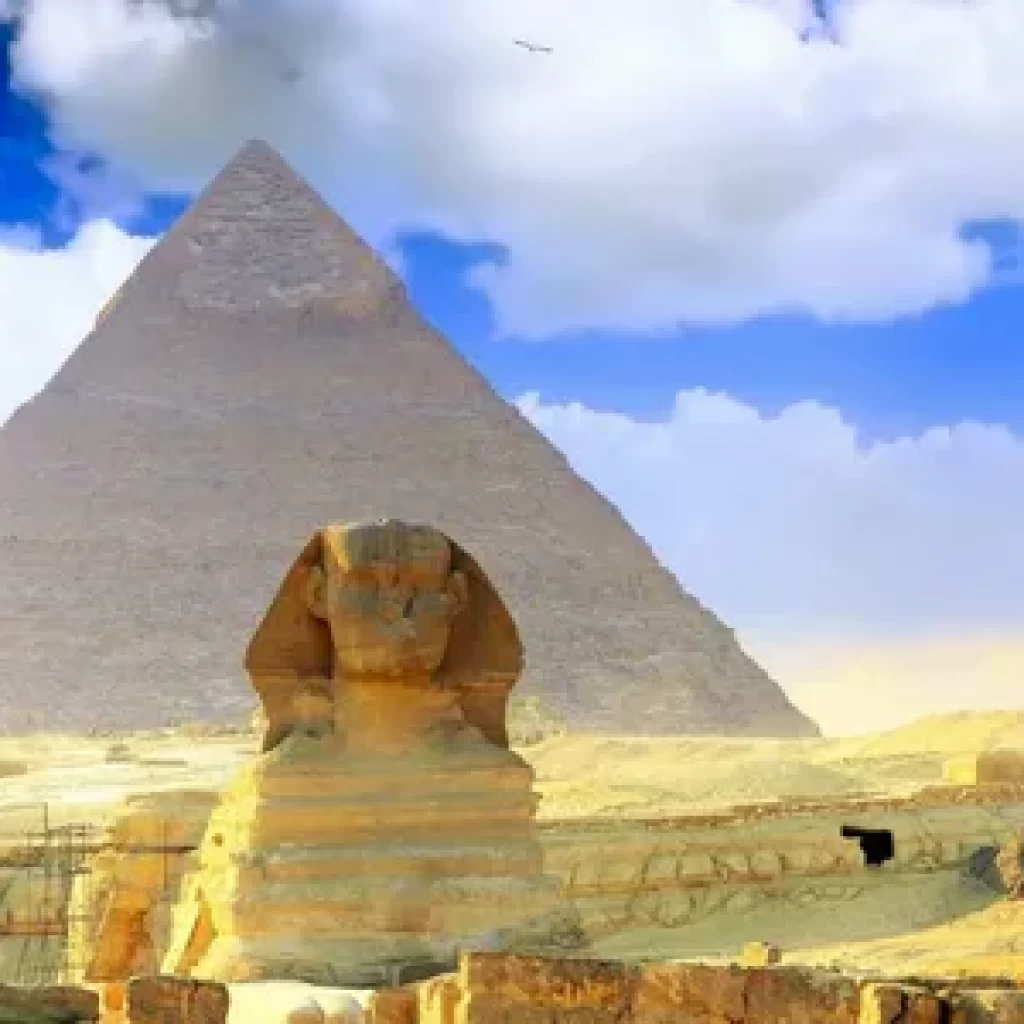
9. The Sphinx’s Future: Preserving an Iconic Ancient Landmark
In 1799, an officer in Napoleon’s engineering corps stumbled across a slab of granite near a city called Rosetta. The stone contained the same message inscribed in three different languages. When fully translated, the Rosetta Stone would prove to be the key to unlocking the secrets of Ancient Egypt. When the French were driven out of Egypt by the British in 1801, they left with countless treasures, but without learning any more about the Sphinx.
Conclusion:Sphinx of Giza
Will Egypt’s most recognizable icon ever give up all its secrets? – I don’t expect that we’re ever going to know everything. I think there’s always mysteries, there are always theories that may replace other theories. – If we do know too much, we shall lose our interest.I think it’s better not to know too much. We know enough. – I think, you know, like so many modern scientists and scholars, we have to be comfortable with the level of probability, rather than certitude, rather than certainty. I think if we had to be certain, we’d rebel against it .
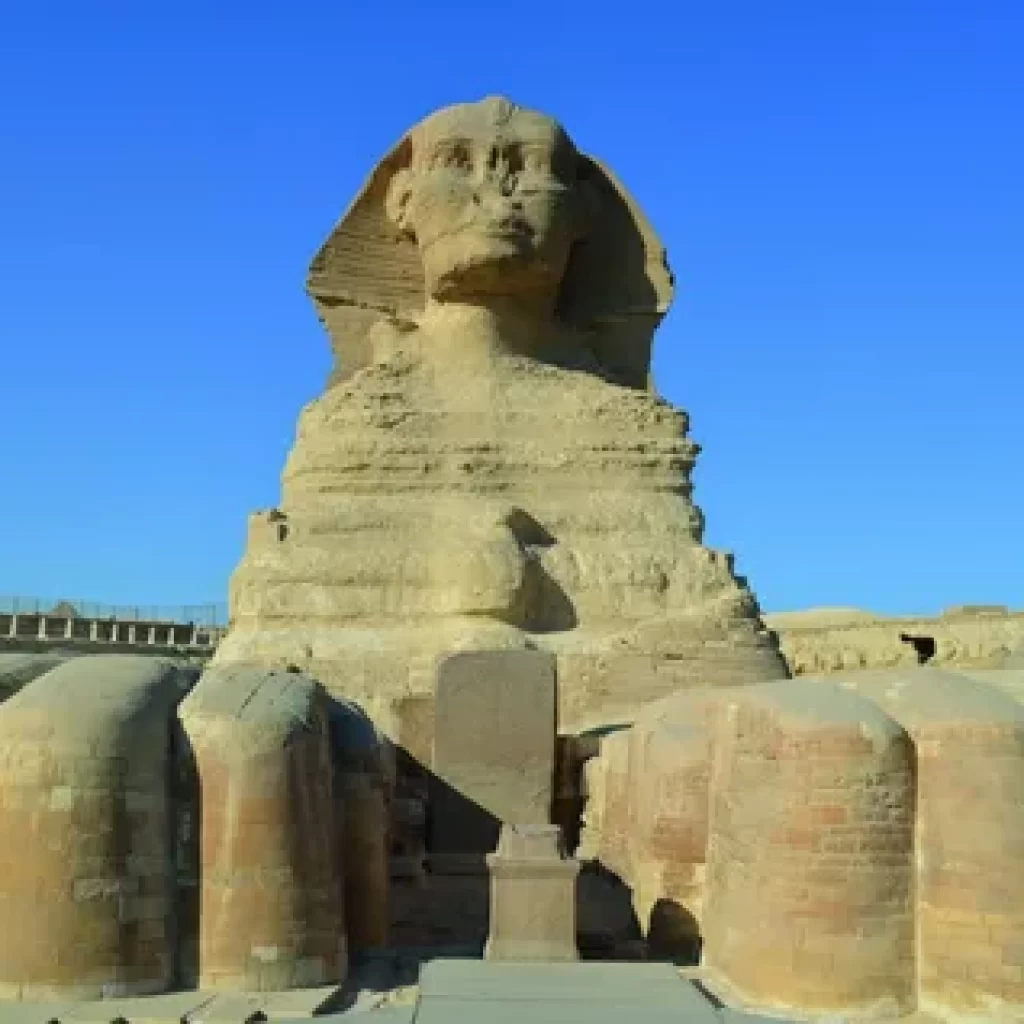
FAQs:Sphinx of Giza
- What is the Sphinx of Giza?
The Sphinx of Giza is a colossal limestone statue located on the Giza plateau in Egypt. It is one of the most iconic and enigmatic monuments of the ancient world.
- When was the Sphinx of Giza constructed?
The general consensus among scholars is that the Sphinx was commissioned by the pharaoh Khafre during the Fourth Dynasty, around 2500 BCE.
- What are the dimensions of the Sphinx?
The Sphinx of Giza measures approximately 73 meters (240 feet) long and 20 meters (66 feet) high, making it a truly massive and impressive structure.
- What is the significance of the Sphinx in ancient Egyptian mythology?
In ancient Egyptian beliefs, the Sphinx was often associated with the sun god Ra and was seen as a symbol of power, wisdom, and the duality of human and divine nature.
- What efforts have been made to preserve the Sphinx?
The Sphinx has been the subject of numerous excavation and preservation efforts over the centuries, including early 19th-century discoveries and modern-day restoration projects aimed at safeguarding its legacy.
- How have modern technologies influenced the study of the Sphinx?
The application of advanced technologies, such as laser scanning and digital imaging, has revolutionized the study of the Sphinx, allowing researchers to create highly detailed 3D models and uncover new insights about the monument.
- What are some of the ongoing debates and controversies surrounding the Sphinx?
The Sphinx has been the subject of numerous debates and controversies, with scholars offering a wide range of theories and interpretations about its origins, purpose, and significance. These ongoing discussions continue to inspire further research and exploration.





Comment (0)